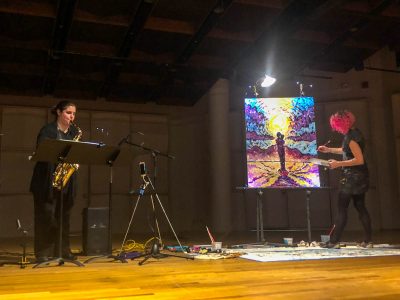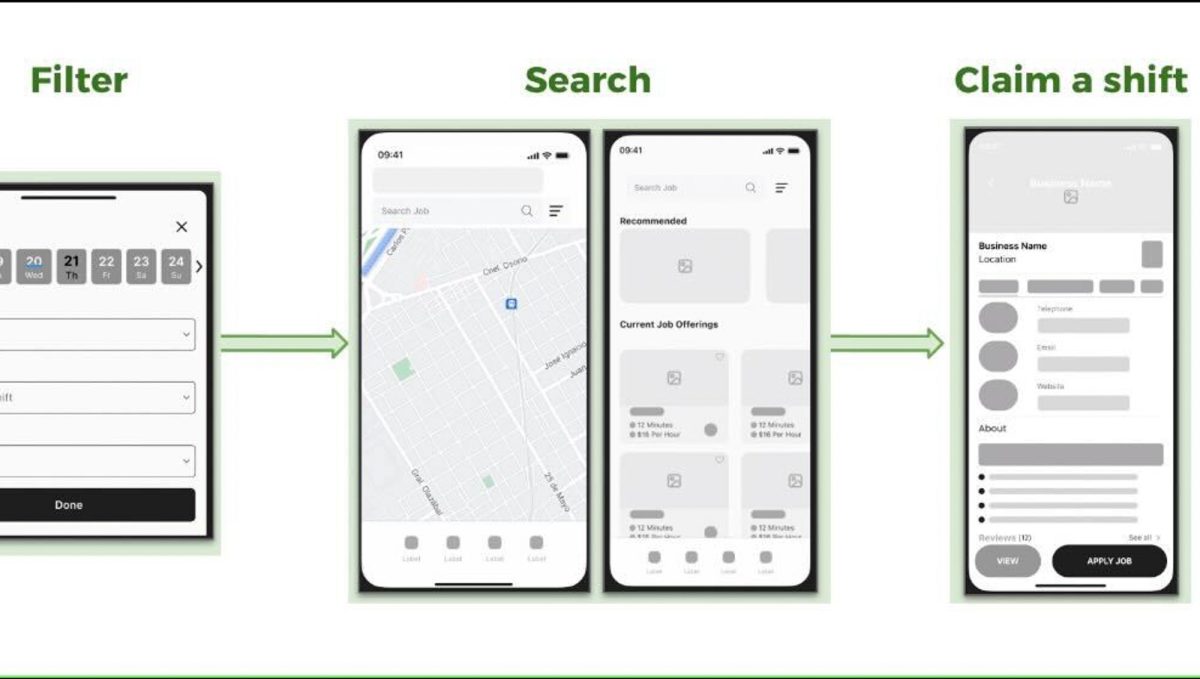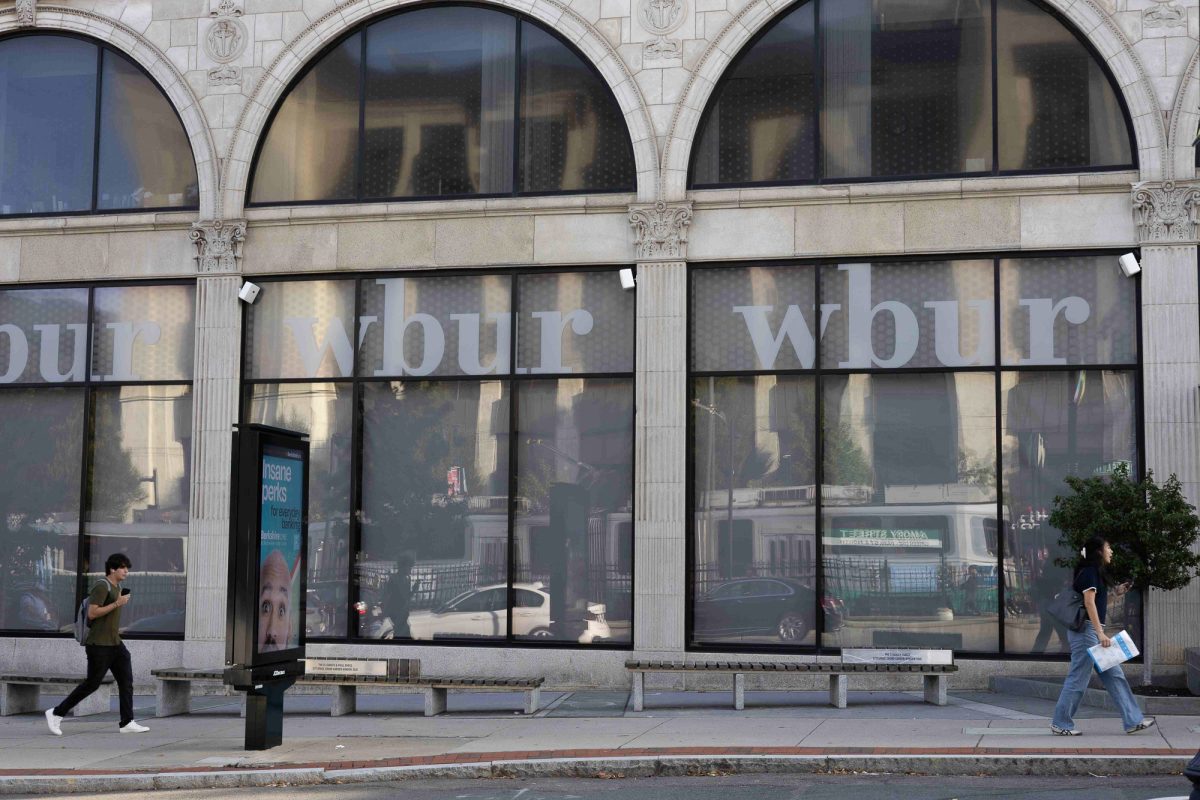
An indigo silhouette takes form on a canvas as the artist paints dash marks around the shape to staccato notes playing in the background. Two artists stand onstage — one faces the audience and holds a saxophone, the other faces away and wields a paintbrush.
The painter accompanies the trills of the saxophone by creating wiggling lines that radiate out from the center of the canvas. The musician glances at the painter, they smile at one another for a second, then continue to create their art.
Visual artist Linnea Maas and Jennifer Bill, a professor at Boston University’s College of Fine Arts, collaborated onstage at the CFA Concert Hall Tuesday night for a performance of their self-styled “auralvisual experience,” BRUSH|REED.
As Bill played a selection on a saxophone, Maas painted on canvas with acrylics. The two built off of one another in an interwoven and interdisciplinary performance.
“There’s something a little different about this performance,” Bill said to the audience as she introduced Maas. “First off, there’s a painter.”
The performance included 10 songs from various sources, stretching from Johann Sebastian Bach’s “Partita in A Minor” to several more modern compositions by Jacob Ter Veldhuis that included eerie, pre-recorded accompaniment and soundscape effects.
By the end of the show, Maas had produced a painting of two figures embracing in front of a mountain range, silhouetted by the sun.
According to the BRUSH|REED website, the project is a collaboration in which “the music is inspired by the artist and the artist is inspired by the music.” Bill explained that because the music and the painting are both performed live, the two are linked in an unusual way.
“There’s a lot of existing collaboration between music and visual art, but most of the time, the visual component is pre-made,” Bill said. “But this is live painting. In the past, when we’ve done workshops with students with live painting, they’ve found it very difficult.”
Bill and Maas performed BRUSH|REED at Boston University back in 2009. When preparing for the collaboration, Maas sketches as she listens to a potential repertoire of music that they may include in the show, while Bill practices the music for the performance.
The duo said they had not performed together for about a year before Tuesday’s performance.
“Linnea picks the music,” Bill said. “If she doesn’t like it, if it doesn’t go with her artistic flow, it won’t work.”
Maas and Bill met in high school in Mound, Minnesota. They first conceived of the idea for BRUSH|REED in 2008 and performed it 13 times in various locations, from Tanglewood in Lenox, Massachusetts, to Hong Kong, China. According to Maas, in the beginning, the project was originally only supposed to last a few months.
“Over the past 10 years, the project has definitely evolved,” Bill said. “We’ve both gone through a lot in our personal lives, so there’s a maturity factor as well. It has taken a long time to get to this point.”
As a saxophone professor, Bill said she hopes the performance will inspire her students “to look from a different perspective.” Bill and Maas emphasized the importance in teaching students flexibility in their art forms.
“I see BRUSH|REED as interdisciplinary,” Maas said. “Often, there doesn’t seem to be as much connection between art and music students. I love being able to show that there is something there, and I love hearing from people how the two impacted one another in their experience of watching the performance.”
Ana Sangermano, a senior in CFA, said she felt the schools of theatre, visual arts and music are often separated, so she resonated with the interdisciplinary nature of the performance.
“To see two professionals in their fields doing a collaborative performance is really cool,” Sangermano said.
Christopher Dempsey, director of production and performance at the BU School of Music, said a performance like this is valuable to the program because students can see all that faculty have to offer.
“[BRUSH|REED] is a real combination of music and art,” Dempsey said. “It shows that musicians and artists can work together, and that different forms of art can feed off of one another.”



















































































































